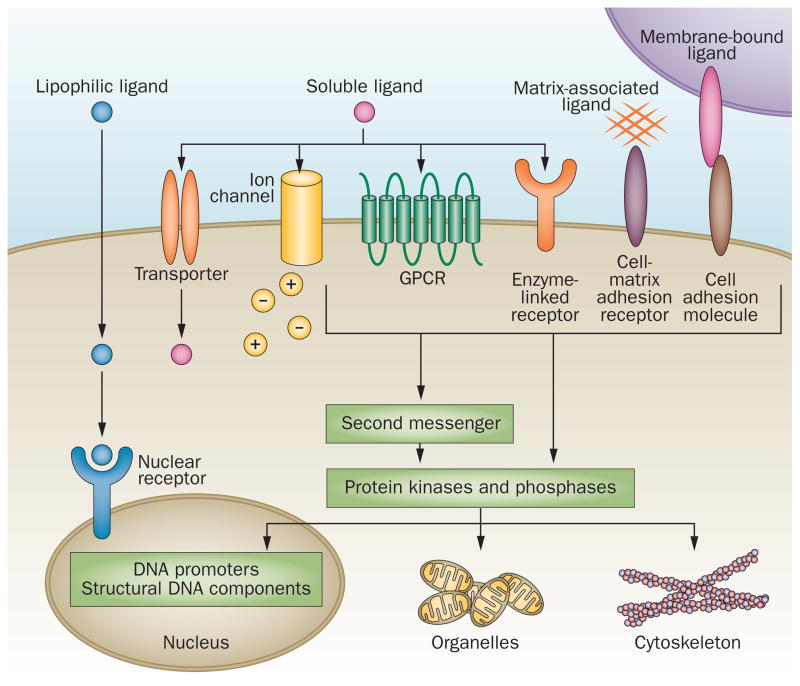Figure 2.
Cell signalling receptors differ in their mechanisms of activation and signal transmission, subcellular localization, and ligand binding. They can be broadly classified into three groups: GPCRs, receptors with enzyme-linked activities (such as receptor tyrosine kinases) and cytokine receptors. Some receptors mediate cell-to-cell or cell-to-matrix contact by binding transmembrane proteins or extracellular proteins, respectively, and link cell adhesion to outside-in and inside-out signalling. Ligand binding ultimately leads to the activation of second messengers, protein kinases and phosphatases that modify and determine the phosphorylation state of a variety of target proteins and thereby regulate all aspects of cell function and structure. Some ligands that induce signalling via receptor binding are transported across the cell membrane via the receptor, or induce transport of other extracellular molecules or ions that have intracellular effects, which might not involve a second messenger system. Lipophilic ligands that can cross the cell membrane by simple diffusion target intracellular receptors that act directly as transcriptional regulators. Abbreviation: GPCR, G-protein coupled receptor.

